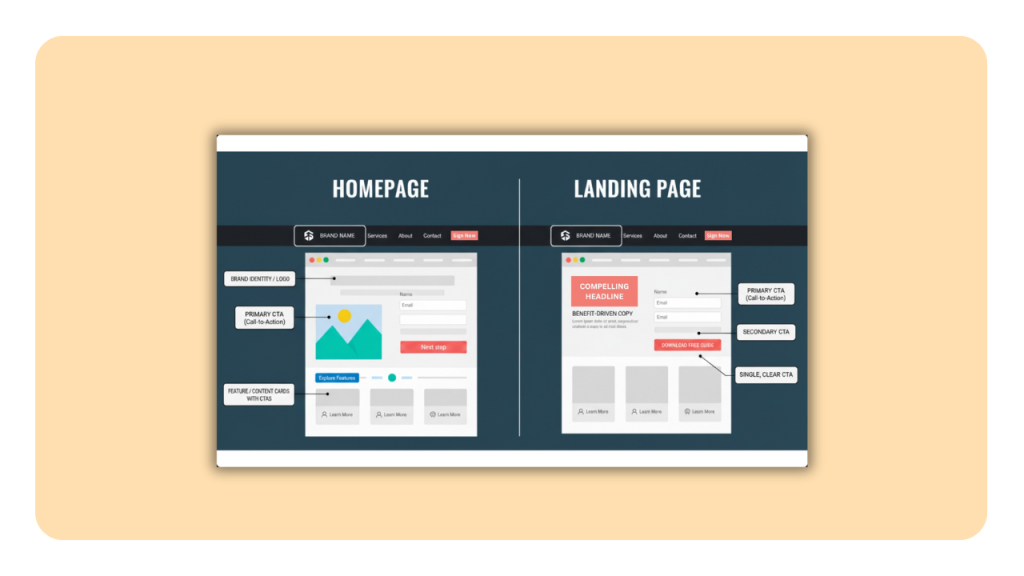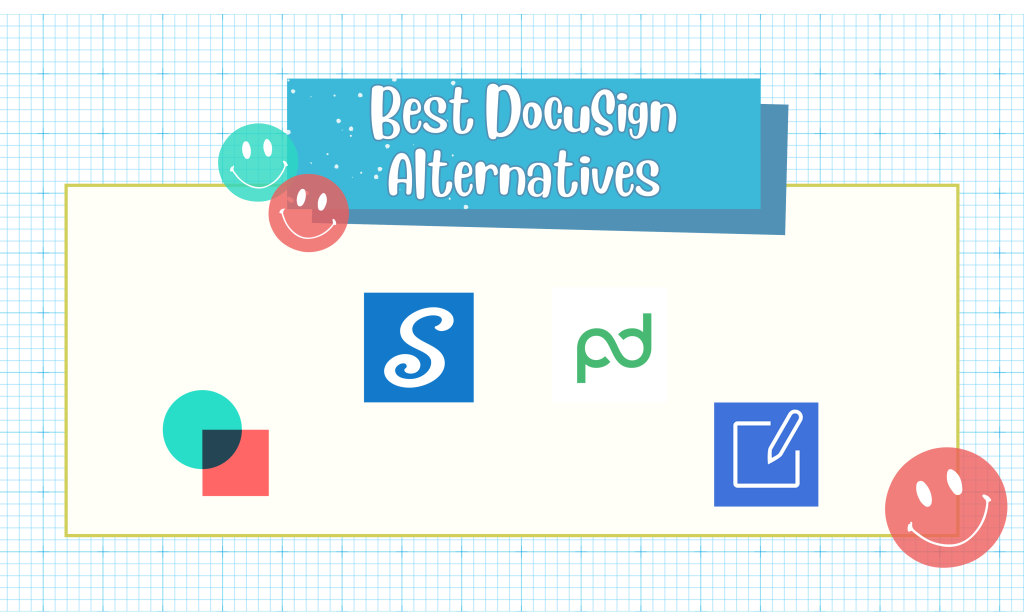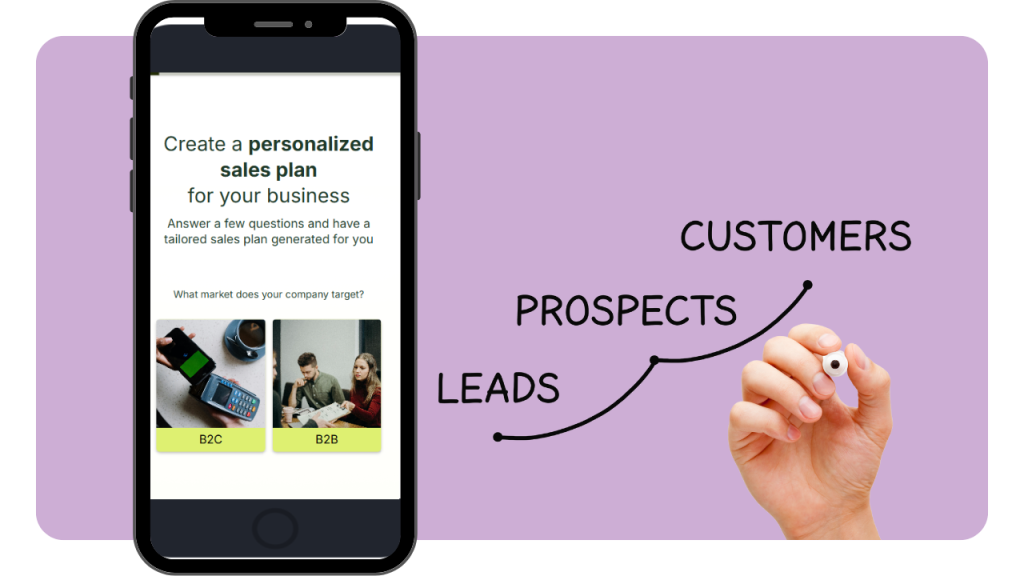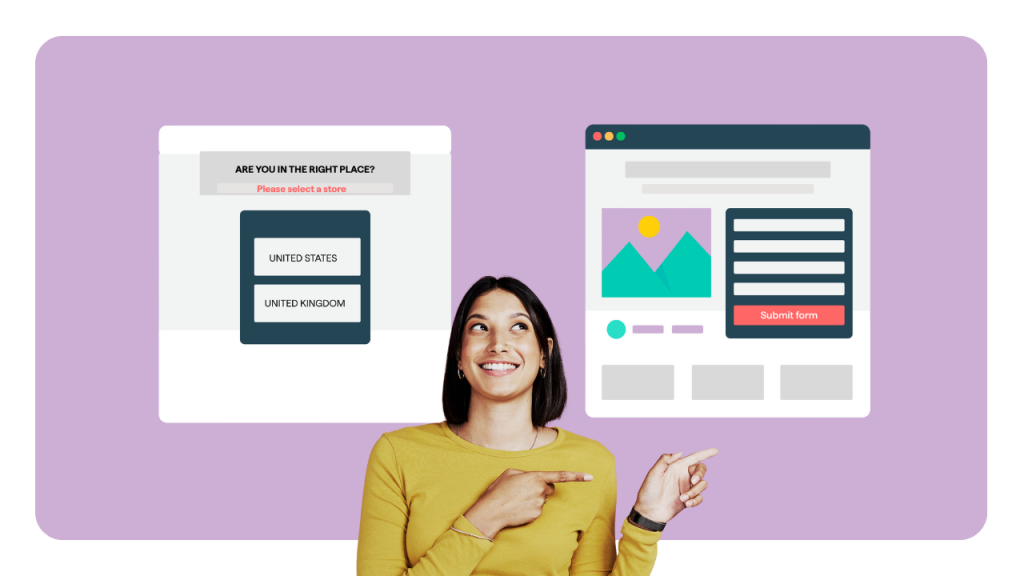Many businesses struggle to understand the difference between a landing page vs homepage, often using the terms interchangeably. While both are key parts of a digital strategy, they serve very different purposes.
A homepage acts as the main entry point to a website, guiding visitors to explore multiple sections. In contrast, a landing page is built with a single, focused goal, usually to capture leads or drive conversions. Knowing when to use each can greatly impact marketing results, especially in paid campaigns.
This is why searches like “landing page vs website” and “home page vs landing page” are so common.
This article breaks down the differences between a homepage and a landing page, explains when to use each, and highlights how they work together in a marketing funnel. You’ll also see common mistakes, best practices, and examples to help you choose the right page for your business goals.
What Is a Homepage?
A homepage is the main entry point of a website, often the first page visitors see when typing in your domain. It serves as a central hub that introduces your brand and guides users to different sections of your site.
The primary purpose of a homepage is navigation, branding, and providing an overview of what your business offers. Instead of pushing a single action, it gives visitors multiple pathways to explore, whether that’s learning about your products, reading your blog, or contacting your team.
Key elements of a homepage include:
A navigation menu for browsing different pages
Multiple CTAs (calls-to-action) for various actions
Company information and brand identity
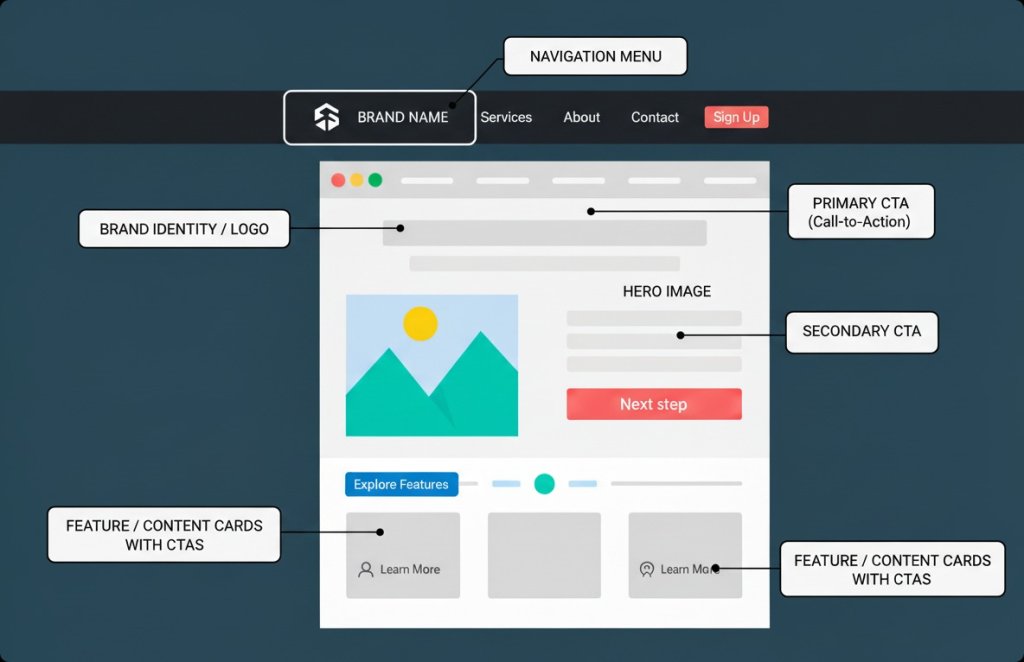
What Is a Landing Page?
A landing page is a standalone page created with a specific, single goal in mind, such as capturing leads, generating sales, or encouraging signups. Unlike a homepage, it eliminates distractions and directs visitors toward one clear action.
The main purpose of a landing page is to focus attention on conversion, making it ideal for marketing campaigns, ads, or promotions. Every element is designed to support that single objective.
Key elements of a landing page include:
A compelling headline that grabs attention
Benefit-driven copy highlighting the offer
A single, clear CTA (e.g., “Sign Up Now” or “Download Free Guide”)
A form or purchase button to complete the action
For instance, a product launch page or an ebook download page is a typical landing page, guiding visitors to take one action without distractions.
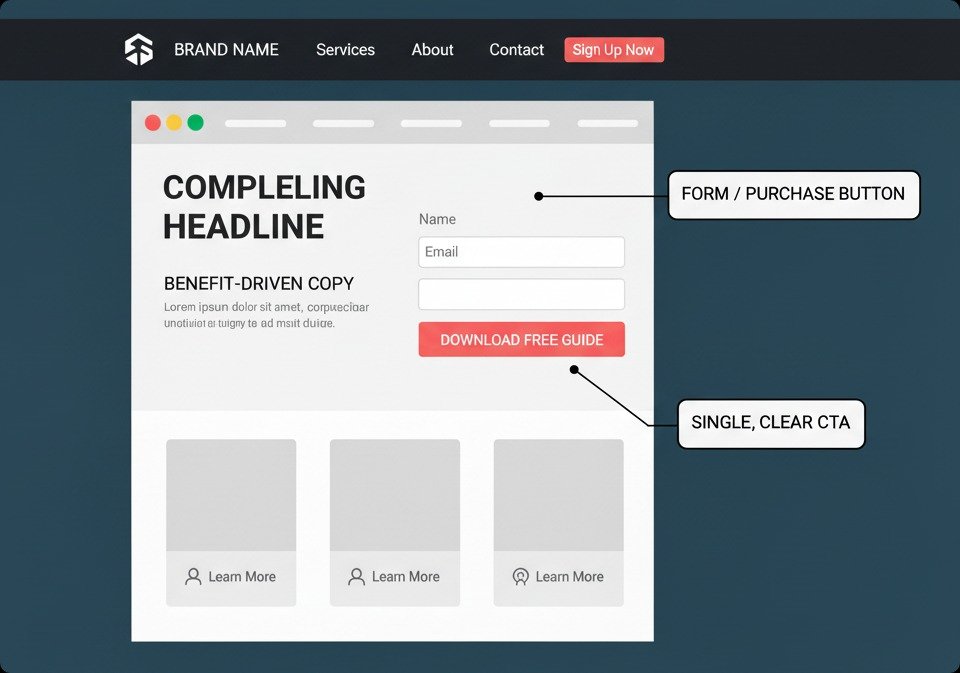
Landing Page Vs Homepage: The Key Differences
At first glance, a homepage and a landing page might look similar, but their structure and goals are very different. A homepage acts as a brand hub, while a landing page is a conversion tool.
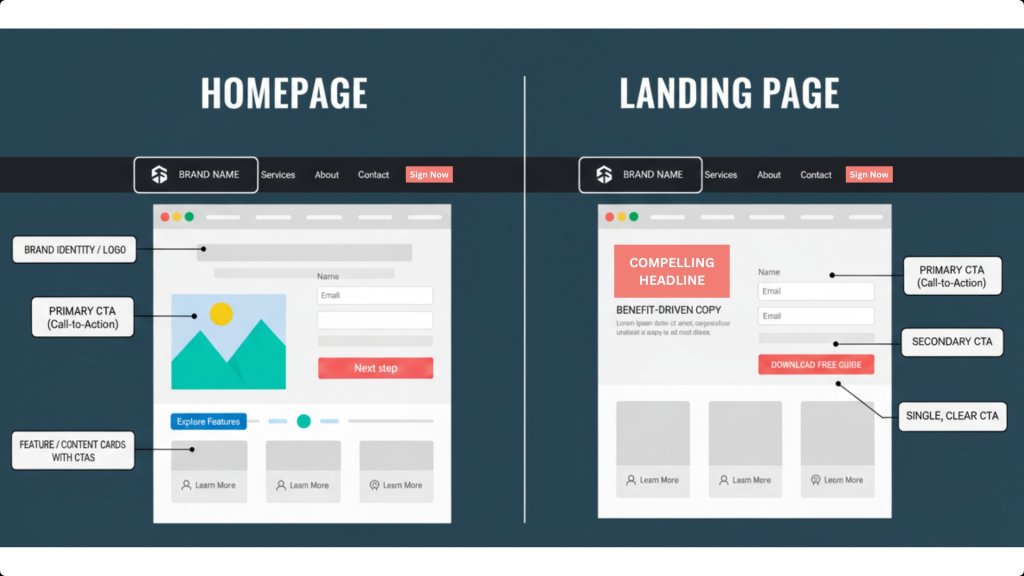
The table below highlights the key differences:
Feature | Homepage | Landing Page |
Purpose | Introduce brand, navigation hub | Drive a specific conversion |
Audience | General visitors | Targeted traffic (ads, campaigns) |
CTAs | Multiple links and buttons | Single focused CTA |
Navigation | Full site navigation | Minimal or no navigation |
SEO Role | Broad keyword focus | Campaign/offer-specific |
Conversion Rate | Lower | Higher |
In short, a homepage spreads attention across different sections of a website, while a landing page narrows it down to one action, making it more effective for campaigns and lead generation.
When to Use a Homepage Vs Landing Page
While both a homepage and a landing page play important roles in your digital strategy, they are not interchangeable. Choosing the right one depends on your marketing objective and the type of traffic you are driving.
Use a Homepage when:
Building brand awareness: Your homepage acts as the “face” of your business, showcasing your brand identity, values, and what you stand for. It’s often the first impression potential customers have when they search for your business online.
Providing a company overview: The homepage gives visitors a snapshot of who you are and what you do. It links to multiple areas of your site, such as products, services, blog, and contact pages, so visitors can self-navigate based on their needs.
Serving as a navigation hub: A homepage functions like a map, directing visitors to different sections of your website. Its purpose is not to push a single conversion but to let users explore freely.
Use a Landing Page when:
Running paid ads: If you’re investing in Google Ads, Facebook Ads, or any other paid campaign, sending traffic to a homepage can cause distractions and reduce ROI. A landing page focuses visitors on the specific action you want them to take, increasing conversion rates.
Offering a free trial, ebook, or demo: Lead magnets and signups work best on landing pages because they strip away everything that doesn’t support the main goal—getting visitors to enter their details.
Promoting an event or product launch: When you have a time-sensitive offer or launch, a landing page provides a direct and compelling way to get signups or purchases without losing attention to unrelated content.
In short: Use your homepage for broad introductions and navigation, and your landing page for focused campaigns and conversions.
How Landing Pages and Homepages Work Together
It’s not a matter of choosing one over the other. In fact, homepages and landing pages are most effective when used together in your marketing funnel.
Your homepage plays the role of a trust-builder and brand introducer. It reassures visitors with your company’s credibility, values, and offerings. It’s designed for a wide audience, people who may just be discovering you or want to explore your business in detail.
Your landing pages, on the other hand, are your conversion specialists. They’re tightly focused on one offer, one audience, and one action. Because they remove distractions, they guide visitors toward the next step in your funnel, whether that’s downloading a resource, signing up for a demo, or completing a purchase.
Here’s how they work together in a marketing flow:
Ads or Campaign Traffic → Landing Page → Thank You Page → Homepage for deeper exploration
Visitors first see your landing page via an ad, social post, or email link.
Once they convert (e.g., sign up or purchase), they land on a thank you page.
From there, you can direct them to your homepage or other sections of your site, encouraging them to learn more about your brand.
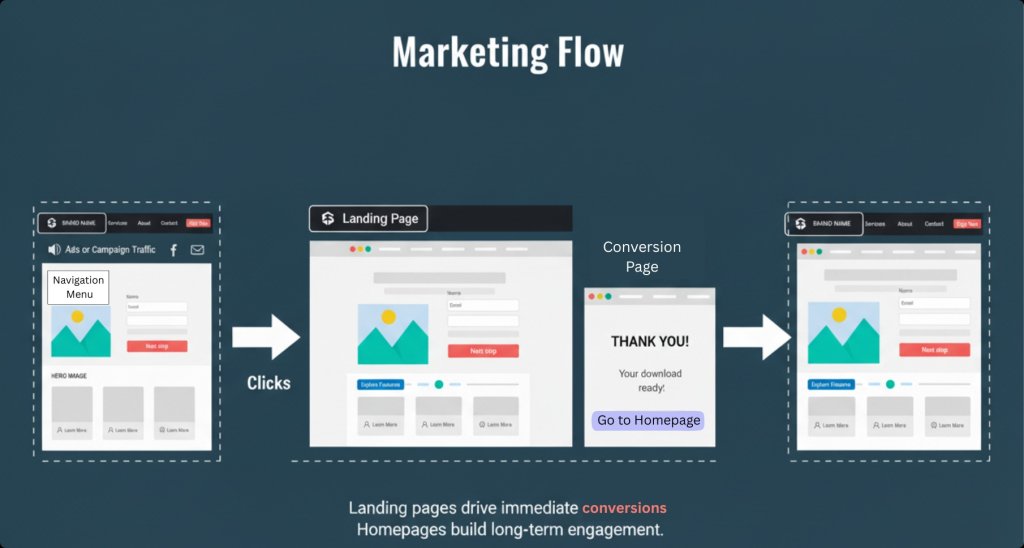
This way, the landing page drives immediate conversions, while the homepage supports long-term engagement and trust-building. Both are essential for a balanced digital strategy.
Common Mistakes to Avoid
Even when businesses understand the difference between a homepage and a landing page, they often make costly mistakes that hurt performance. Here are the most common ones:
Driving paid ads to the homepage instead of a landing page: A homepage has too many distractions, menus, multiple links, and different CTAs, making it less effective for conversions. Paid traffic should always be directed to a dedicated landing page that aligns with the ad’s promise.
Using too many CTAs on a landing page: The whole point of a landing page is to focus on one action. Adding multiple CTAs like “Sign Up,” “Contact Us,” and “Learn More” dilutes the message and lowers conversion rates.
Ignoring SEO optimization for both: While landing pages are often built for campaigns, they should still follow SEO best practices. Likewise, a homepage should be optimized with strong keywords, metadata, and internal links to rank well and attract organic traffic.
Best Practices (Landing Page Vs Homepage)
To make the most of your homepage and landing pages, follow these proven best practices:
Homepage best practices:
Use clear navigation so visitors can easily find what they need.
Showcase a strong brand identity with visuals, messaging, and trust signals.
Keep it SEO-friendly with optimized headings, meta descriptions, and internal linking.
Landing page best practices:
Write a strong, benefit-driven headline that grabs attention instantly.
Stick to a single, clear CTA (e.g., “Download Free Guide” or “Start Free Trial”).
Use A/B testing to refine headlines, CTAs, and layouts for higher conversions.
Keep the design minimal and distraction-free, avoiding unnecessary links or navigation.
Final Words
The debate of homepage vs landing page isn’t about choosing one over the other, it’s about using both strategically. Your homepage serves as a general navigation hub, welcoming visitors and helping them explore your brand. Your landing page, meanwhile, is a focused conversion tool, designed to turn targeted traffic into leads, signups, or sales.
When used correctly, they complement each other: the homepage builds trust and credibility, while the landing page drives action. Together, they form a powerful combination in your marketing funnel.
If you’re ready to create high-converting landing pages without coding, tools like involve.me make it easy. With drag-and-drop templates, personalized flows, and built-in analytics, you can turn campaign traffic into qualified leads seamlessly.
Create a landing page in minutes
No coding, no hassle, just better conversions.

